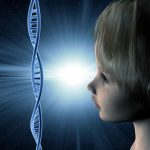Opinion: The crisis in autism research
Autism Speaks, the world’s largest autism charity, wants to create a “spectrum of solutions” for autism. Similarly, MIT’s new $20 million Tan-Yang Center for Autism Research aims to “potentially prevent autism,” and Donald Trump has resolved to promote “innovation that leads to new treatments and cures for autism.”
“What’s wrong with that,” you may wonder. A lot of people have autism-related difficulties, therefore if you get rid of the autism, you get rid of the difficulties, and they’ll be happy, right?
There are a multitude of competing theories about what autism is. Some think it’s caused by an “extreme male brain.” Some think its symptoms stem from a focus on details. Some think it results from hypersensitivity to sensory input such as light and sound. Others combine these theories, or have different ones. Regardless, there’s no consensus on the fundamental nature of autism. It doesn’t make sense to try to eliminate something when you don’t know what it is.
Ostensibly, these goals are here to improve autistics’ quality of life, but quality of life is deeply personal and highly subjective. For example, I don’t care that I can’t catch a ball, since there is literally no reason I would need to do that. I also am extremely thankful for my ability to speed read, since I wouldn’t be able to handle my course schedule otherwise. Someone whose job doesn’t require much reading and who loves to spend their weekends playing sports with friends might be just as happy with their life as I am, and be angry if they were forced to trade their skills and difficulties with mine.
Autism is obviously different from catching a ball, but it is associated with a wide variety of traits, which may manifest themselves in positive or negative ways depending upon the individual experiencing them. For example, unusual sleeping patterns are common in autism. Sparrow Rose Jones, an autistic writer, says it would be a “dream come true” to “get targeted treatment” for her sleeping problems. On the other hand, Michelle Dawson, an autistic researcher, says that her patterns of sleeping help her avoid jet lag and work more efficiently, calling the typical sleep-wake cycle a “circadian prison.” Even the inability to speak, a commonly targeted impairment, may come with a silver lining: One autistic blogger who writes on a blog called “Non Speaking Not Silent” says that she regrets learning to speak, because it caused her to become less of a visual thinker. She now uses an iPad to communicate.
Unfortunately, studies purporting to measure autistics’ quality of life have done a poor job of figuring out what their subjects do and don’t value. A landmark 1987 study of early intensive behavioral intervention, a therapy widely considered to be the gold standard in autism treatment, claimed their method — which involved slapping children — was effective because 47% of subjects became “indistinguishable from peers.” More recently, Deborah Fein, a professor at the University of Connecticut, labeled people who lost their autism diagnosis as “optimal outcomes” in 2013.
Yet indistinguishability is only optimal within the context of a culture that values conformity over diversity. The Declaration of Helsinki, the World Medical Association’s ethical guidelines for human experimentation, argues that “medical research involving human subjects may only be conducted if the objective outweighs the risks and burdens to the research subjects.” Much research on autism has assumed the removal of autism is such a worthy objective it is worth flouting even the most basic ethical standards. Before continuing to pursue this goal, they need to seek input from autistics on whether they desire so-called treatments, or whether this would itself constitute a risk and burden.







